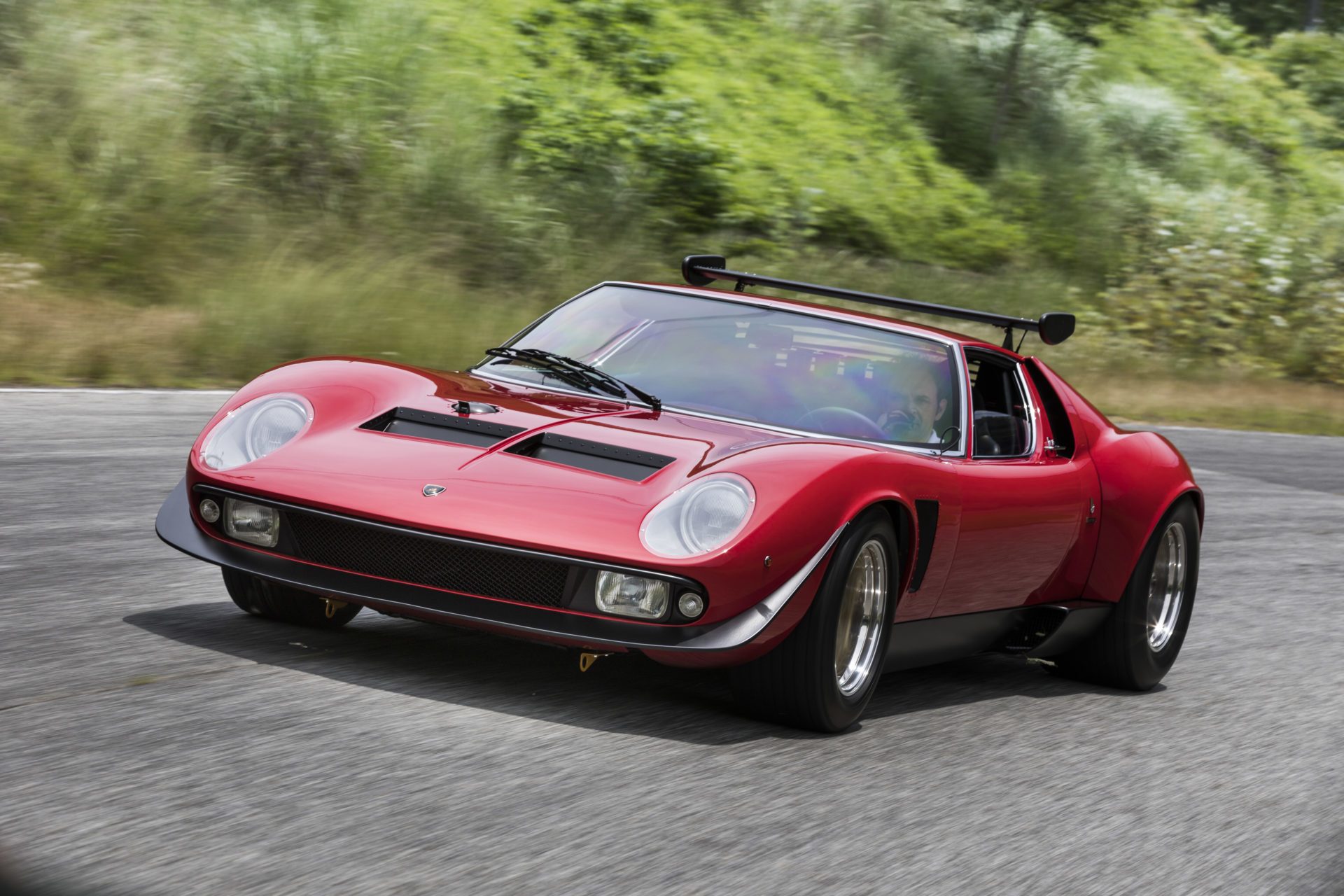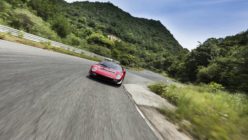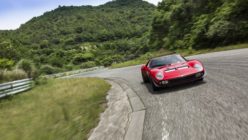Lamborghini’s specialist classic car restoration service, Polo Storico, has tackled an even more special vehicle than usual.
It’s a car that might be more familiar to those who collect model cars rather than classic cars. Kyosho, Japanese producer of diecast model cars, created a 1:18 scale version of this exact vehicle.
The one-of-one Lamborghini Miura SVR has a rather novel origin. Chassis number #3781, Lamborghini originally created the Miura SVR as a regular, green Miura S. It delivered the car to the Lamborauto dealership in Turin in 1968, almost half way through the Miura’s six-year, 763-example production run.

In 1970, Lamborghini’s own development driver Bob Wallace wanted to build the Miura into a race car. He created a test vehicle based around the FIA’s Appendix J racing rules, calling it “Jota” after the Spanish letter “J”. Along with being lighter and more powerful, the Jota had corrections to the car’s aerodynamics. The regular Miura was prone to front-end lift above 140mph, so Wallace equipped the Jota with a huge, wraparound front splitter.
Despite this, the Jota met a very early end. After a private buyer purchased the Jota, it crashed and burned to ashes in 1971. Reportedly a mechanic was driving the car at the time…

However, the look of the Jota proved inspirational. When chassis #3781 reached the hands of German car collector Heinz Steber, he ordered it to be rebuilt in the image of Wallace’s Jota. This process took the factory in Sant’Agata 18 months to complete, starting in 1974. The end result was this, the Miura SVR.
Like the Jota, the SVR is more powerful, lighter and lower. Estimates put the Jota at 800lb lighter than a regular P400 — which wasn’t exactly heavy at 2,900lb. The SVR is unlikely to be as featherweight, but still boasts 440hp from the reworked 3.9-liter V12. A roof-mounted spoiler like some Countach models, complements the chin spoiler.
Wallace’s suspension changes carry over to the SVR too. The huge bodywork extensions — now red — hide nearly a foot of widening work under car, with giant 345/35ZR15 tires on lightweight, centerlock BBS wheels.

The car made its way to Japan in 1976. Hiromitsu Ito, the owner and founder of Tomei Motors, bought the car for a reported $550,000. There, it inspired a vehicle in the Circuit Wolf manga, and caught the eye of Kyosho.
After that, the history of the car becomes a little murky. Ito owned the car for at least thirty years, but it showed up on the Bingo Sports car sales site in late 2015. It had reportedly undergone a “recent” full three-year restoration, and a remarkable golden brown interior replaced the more spartan black Recaro racing seats of the original SVR. Bingo Sports did not disclose a sale price for the vehicle…
Curiously, despite that recent restoration, it reached Polo Storico back in Italy “in pieces”. The factory took 19 months to rebuild the car, relying on the 1974 build sheet rather than the original 1968 production plans, to recreate the car. This included replacing that race-inspired interior.

Lamborghini chose to reveal the car at the Nakayama Circuit, delivering it back to its owner.
Speaking of the restoration, Paolo Gabrielli, director of the Polo Storico, said:
“The full restoration took 19 months, and required a different approach to the way we normally work. The original production sheet wasn’t of much help, as we relied mostly on the specifications from the 1974 modifications.
“The challenge for the Polo Storico team was even more daunting as the car arrived in Sant’Agata in pieces, although the parts were all there, and with considerable modifications. The only variations on the original specifications were the addition of 4-point safety belts, more supportive seats and a removable roll bar. These were expressly requested by the customer and are intended to improve safety during the car’s racetrack exhibitions.”
See more articles on Lamborghini Miura.
























